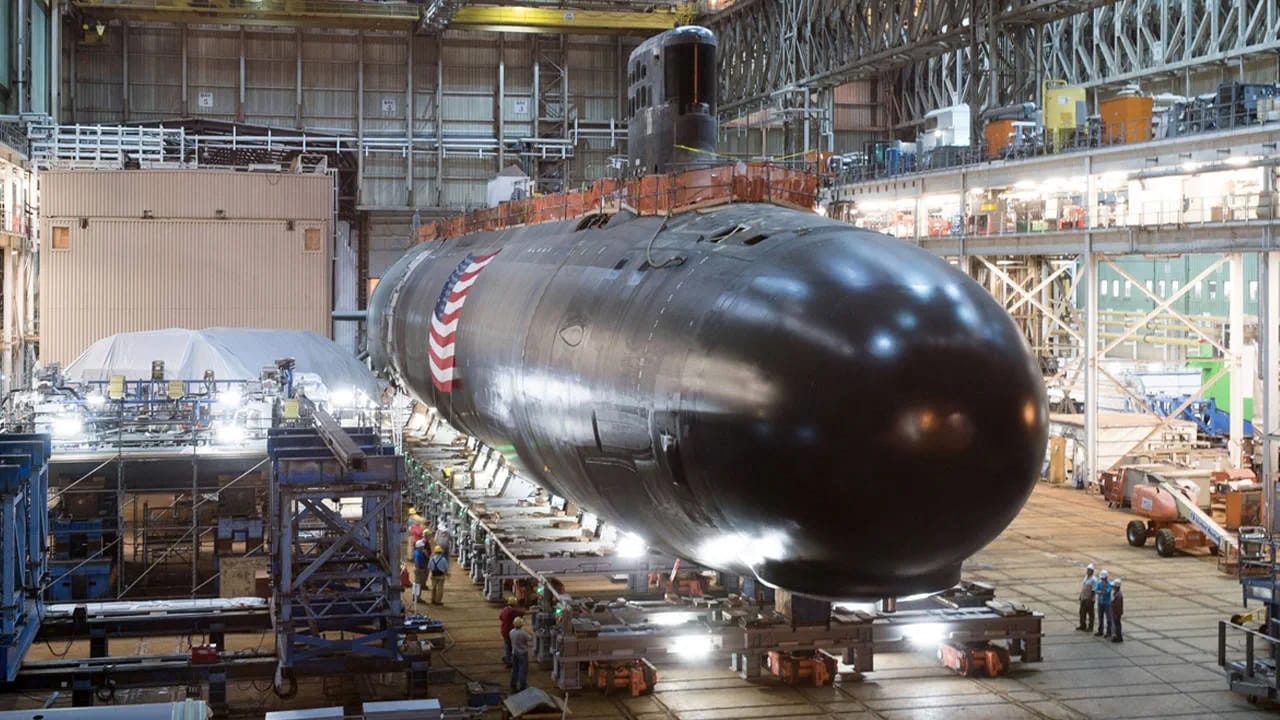Virginia-class Submarine Spotted Transiting the Panama Canal – Every year approximately 13,000 to 14,000 ships transit the Panama Canal. The 52-mile-long artificial waterway, which connects the Atlantic Ocean with the Pacific Ocean via the Isthmus of Panama, was completed in August 1914 and it quickly changed the way vessels could travel between the two oceans. Unlike the longer Suez Canal, which was built at sea level, the Panama Canal consists of artificial lakes, several improved and artificial channels, and three sets of locks – with a dozen locks in total. The artificial Alajuela Lake (known during the American era as Madden Lake) also acts as a reservoir for the canal.
The military significance of the canal cannot be overstated. In the interwar era, the canal proved vital to the United States Navy’s two-ocean policy, and the Panama Canal remained under U.S. control until the 1977 Torrijos-Carter Treaties provided for a handover to Panama.
Even today, it is common for U.S. warships and other military vessels to transit the canal, and on Sunday Eric Moreno (@KingNeptune767), founder of the Submarines.Reddit.com discussion group and co-host of TacOps, shared a video on Twitter of a U.S. Navy Virginia-class submarine at one of the canal’s locks.
Moreno didn’t identify which of the 21 currently active Virginia-class submarines had made the weekend transit, but in the 20-second video clip, it was clearly identifiable as one the United States Navy’s newest class of nuclear-powered cruise missile fast-attack submarines.
Meet the Virginia-Class
Designed for use in both the open-ocean and for littoral missions, which include anti-submarine warfare (ASW) and intelligence gathering operations, the U.S. Navy’s Virginia-class was developed to replace the more expensive Seawolf-class while still providing a capable boat to address nautical threats from near-peer adversaries in the 21st century.
Since entering service in 2004, the Virginia-class subs have been able to support five of the U.S. Navy’s six maritime strategy core capabilities including sea control, power projection, forward presence, maritime security, and deterrence. The subs are able to do this by providing a combination of stealth, endurance, mobility, and firepower. The SSNs have a fly-by-wire ship control system that also provides improved shallow-water ship handling, while the boats were also designed to deploy special operator forces including Navy SEALS. A reconfigurable torpedo room can accommodate a large number of SOF and all their equipment for prolonged deployments and future off-board payloads.
Transiting the Panama Canal
With a beam of 34 feet, the undisclosed Virginia-class submarine appeared to easily fit within the original 110-foot (33.5 meters) wide locks. However, many U.S. warships built in the 1930s and 1940s were also designed specifically with the canal in mind – and such massive vessels as the aircraft carriers USS Saratoga (CV-3) and USS Valley Forge (CV-45) and battleships USS Missouri (BB-63) and USS New Jersey (BB-62) all made multiple transits through the waterway. In fact, the Navy’s Iowa-class of fast battleships – which included BB-62 and BB-63 – was the largest U.S. military warships designed to utilize the canal.
Virginia Class spotted in the Panama Canal. #Submarines #SubSunday pic.twitter.com/XOV4Jnrr5o
— Eric Moreno (@KingNeptune767) May 15, 2022
The largest U.S. Navy vessel to make the transit through the Panama Canal in recent years was the USNS Comfort (T-AH-20), a massive hospital ship that was deployed to the East Coast at the beginning of the Covid-19 pandemic.
Now a Senior Editor for 1945, Peter Suciu is a Michigan-based writer who has contributed to more than four dozen magazines, newspapers and websites. He regularly writes about military hardware, and is the author of several books on military headgear including A Gallery of Military Headdress, which is available on Amazon.com. Peter is also a Contributing Writer for Forbes.

